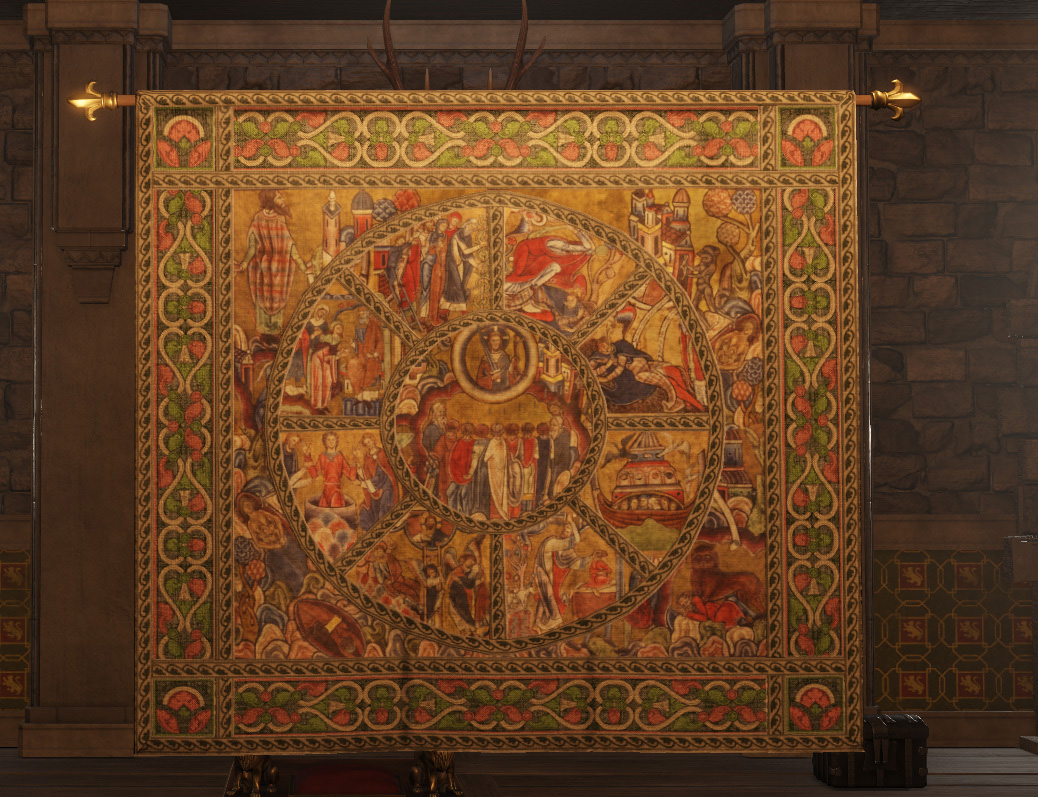Hello everyone!
In this dev diary it is time for us to have a look at some of the artifacts that you may come across, steal or create yourself for your Royal Court. With the introduction of the new throne room scenes we are for the first time in Crusader Kings taking a step into the interiors of our courts. This has given us an opportunity to move artifacts from only being seen as 2D icons in an inventory screen like in CKII, to being visual 3D objects you can show off to increase the grandeur of your court, or give it your own flair.
Also, as always, the pictures in this dev diary are of work in progress.
In this dev diary it is time for us to have a look at some of the artifacts that you may come across, steal or create yourself for your Royal Court. With the introduction of the new throne room scenes we are for the first time in Crusader Kings taking a step into the interiors of our courts. This has given us an opportunity to move artifacts from only being seen as 2D icons in an inventory screen like in CKII, to being visual 3D objects you can show off to increase the grandeur of your court, or give it your own flair.
Also, as always, the pictures in this dev diary are of work in progress.
Artifacts presented in your court
Artifacts presented in your court
Within your court you will be able to show off the artifacts in your possession, from the smaller artifacts on pedestals and reliquaries holding the venerated remains of saints, to fine martial weapons forged or taken, to grand statues or fine furniture. These artifacts can be equipped in a number of slots around your court rooms for viewing of the ruler and his guests. Below is a small selection of the smaller artifacts, usually presented on different pedestals befitting your court.

A Pratiharan volume about revelry.

A reliquary containing a piece of the crown of thorns, you think.

A fine urn taken from the Abbasid court.

A chest of valuables made in the finest of ivory
Designing artifacts of the middle ages
Designing artifacts of the middle ages
The artifacts we’ve added to the game cover a variety of different categories, small and large, and even to adorn your walls. The creation of these artifacts have gone through a few stages of development before making it into the Royal Court.
Research
As in all our games we go through a stage of historical reference hunting to find artifacts relevant to the time period and within the cultures we are depicting. This can be both easy at times and complicated at others depending on the amount of material that has survived the decay or been documented since the middle ages.
Research
As in all our games we go through a stage of historical reference hunting to find artifacts relevant to the time period and within the cultures we are depicting. This can be both easy at times and complicated at others depending on the amount of material that has survived the decay or been documented since the middle ages.

Carved and painted Ivory chests.
During this stage we both look at the aesthetics and historical references we can find and verify. When references are sparse, we still try to extrapolate good looking and aesthetically plausible designs. However in some cases like in the Middle East and other areas there is for example close to no and at best sparse levels of statues or paintings of people. Depending on where this can be for religious or cultural reasons and in those cases where other cultures would show human statues, we’ve instead shifted to area appropriate symbolisms, patterns and art.


A marble statue from southern Europe, and an islamic golden falcon.
While using reference images is an easy task to do, we must also consider the original state of the artifact, since a reference from today could be of a possibly 800 years or more old object. So grime, damage and aging needs to be reconsidered and balanced, while still keeping the object in a used looking state. An artifact could still be owned by a ruling family for long enough to become an antique in its own time.

An icon clad cabinet, don't tell the iconoclasts!
Dynamic objects
Dynamic objects
Banners and some other items in the court have shader support to show the ruler's own flair, since they would be made to the ruler's specifications. The banners below for example read in the primary title held by the ruler to show off your heraldry.


What is a lord without his banner to display his Coat of Arms?
There are also tapestries, where we use a similar system to the clothing shaders to generate interesting patterns and designs to adorn those stone walls in your great halls.


Bringing some color to the hard stone walls in your halls.

